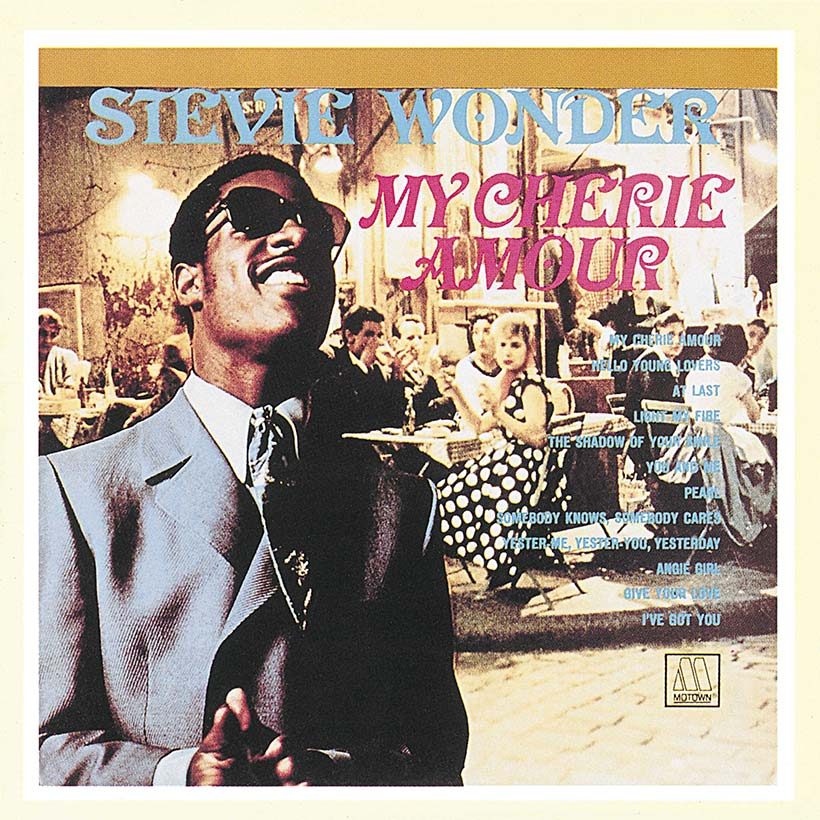‘My Cherie Amour’: How Stevie Wonder Closed The 60s With A Classic
Stuffed with classics – both those Stevie created and those he adopted – ‘My Cherie Amour’ still provokes wonder: how did he get so much joy into one album?

Looking back on it now, it’s all about progression. Stevie Wonder, wunderkind blind multi-instrumentalist, had outgrown his juvenile persona and proved his worth as a super mid-60s soul star with a series of upbeat hits. By 1969, he was hitting a different, more mainstream audience, thanks to the My Cherie Amour album’s title track and the previous year’s “For Once In My Life.” Within a year or two he would find his feet as a self-motivated, self-authoring soul revolutionary, and the likes of My Cherie Amour and its successor, Signed, Sealed, Delivered, will have provided a melodic and harmonic grounding for his unique and impeccable series of glorious 70s albums.
Listen to My Cherie Amour now.
A breeze on a hot summer day
That may be how it looks today, but when it was released, on August 29, 1969, My Cherie Amour was the contemporary Stevie. Nobody knew what was to come. Instead, people gloried in this young man who could deliver songs that attracted dozens of cover versions and became instant standards. Not only that, but his originals were infused with a warmth and joy the remakes could not touch.
“My Cherie Amour,” the song, sounds like a breeze on a hot summer day: fresh, easy and light. There are also some fine versions of Great American Songbook classics, such as the uptempo, beautifully put together interpretation of “Hello Young Lovers,” the highly Motown-y blowout of Etta James’ “At Last” and a surprisingly moving take on Johnny Mandel’s “The Shadow Of Your Smile,” boosted by Stevie’s bittersweet harmonica solo. Someone who was not yet 20 should not have been able to tackle such material so convincingly. Even the album’s rock cover was a tune that had found a parallel life in easy listening: “Light My Fire.” Surrounded by layers of orchestral sounds, Stevie injects genuine urgency into the song’s pleas – this young man is longing for you, baby, you understand?
Late 60s Motown gems
Beyond this previously enjoyed material lay some classy late 60s Motown gems. Deke Richard’s superb “You And Me” is a head-nodder with a glorious bassline from James Jamerson. Richard Morris’ upbeat “Pearl” is driven by Stevie’s urgent vocal with superb support from The Andantes. “Somebody Knows, Somebody Cares” is another of those patented Stevie/Sylvia Moy/Hank Cosby storytelling compositions about a long-standing love. Then there are two more mighty highlights: the hit single “Yester Me, Yester You, Yesterday,” a regretful song that belies Stevie’s tender years, and “Angie Girl.” The latter is a song that really could have graced his classic 70s era, with its floating feel and unexpected chord changes. Tucked away on the back of 1968’s “For Once In My Life” single, fans who flipped the disc were pleasantly surprised by this delightful song, with its string-laden intro that quickly fell away, confounding expectations.
It would not be hard to imagine the ballad “Give Your Love” also transformed from personal to universal love and re-created by the 70s Wonder. My Cherie Amour closes with the mellow, midtempo “I’ve Got You,” the closest the album gets to routine Motown; that riff at the start could easily have powered a mid-60s Isley Brothers’ hit delivered in a style pushier than Stevie’s.
Now we know what was coming, it’s easy to fit this album into a context it did not have at the time. We can’t hear it with 1969’s ears, but we can imagine the smiles it provoked and the romances it helped soundtrack. And while there are standards here – both those he created and those he adopted – who could do them like Stevie? My Cherie Amour may not be his best album, but it was perhaps his best to date. And, yes, it does still provoke wonder: how did he get so much undiluted joy into these songs?












